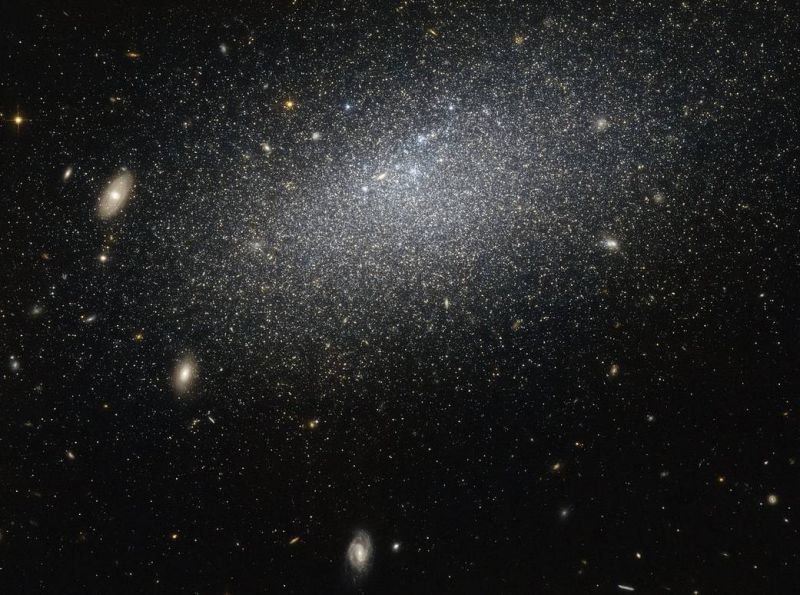The scientists at National Aeronautics and Space Administration (NASA) with the help of Hubble Space Telescope (HST) have found an irregularly shaped Dwarf galaxy consisting of many stars spread around it. Unlike its cosmic cousins, it is devoid of any spirals or elliptical structure and is lot messier and smaller compared to other galaxies.
Astronomers at NASA are very excited about the latest development as it will give some clue to solve the mystery behind the formation of stars and other celestial bodies. The Dwarf galaxy has been named UGC 4879. Unlike other galaxies, it has suffered minimal cosmic interactions because of its neighborhood galaxy Leo.A, which is 2.3 million light years away and is equivalent to the distance between our Milky Way and the Andromeda galaxy. This clearly indicates that the galaxy was isolated in nature.
Astronaut while studying the UGC 4879 found out that within the four billion years, the majority of the stars were formed. In the next nine billion years, there was no growth in star formation, but the next phase of star formation started another one billion years ago and since then it’s growing at a steady rate.
Even though, many things in the UGC 4879 remains a mystery for the scientists like understanding the characteristic of the stars. Also, they are still not able to figure out a reason behind such a complex behavior but are very sure that studying this latest finding of an untouched galaxy will help them gather more experimental data about mysterious and solitary galaxies.
Other than finding UGC 4879, Hubble is out in the space to find more galaxies that look like its latest finding. With this latest development, scientists are sure that they will not only be able to establish the science behind star formation but also explain the birth of numerous complex heavenly bodies.


















